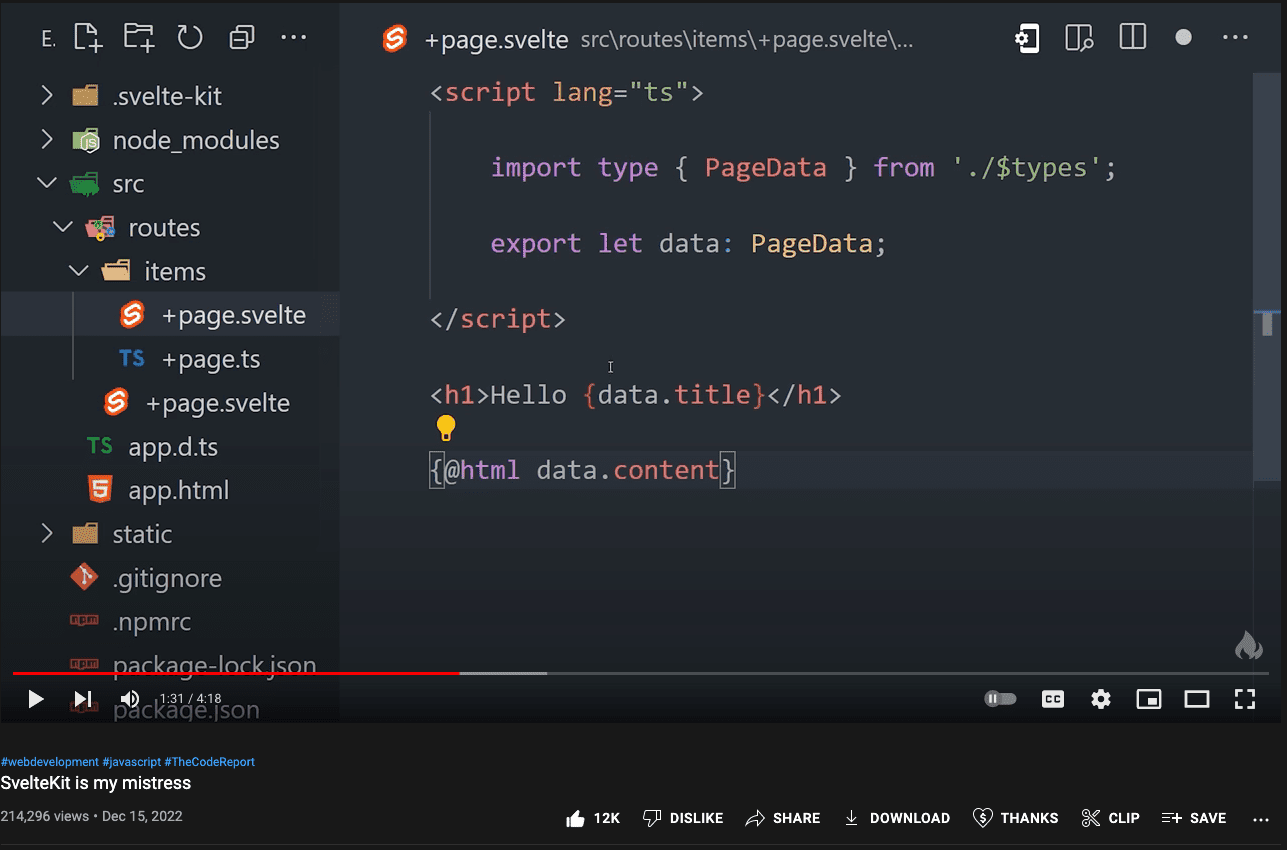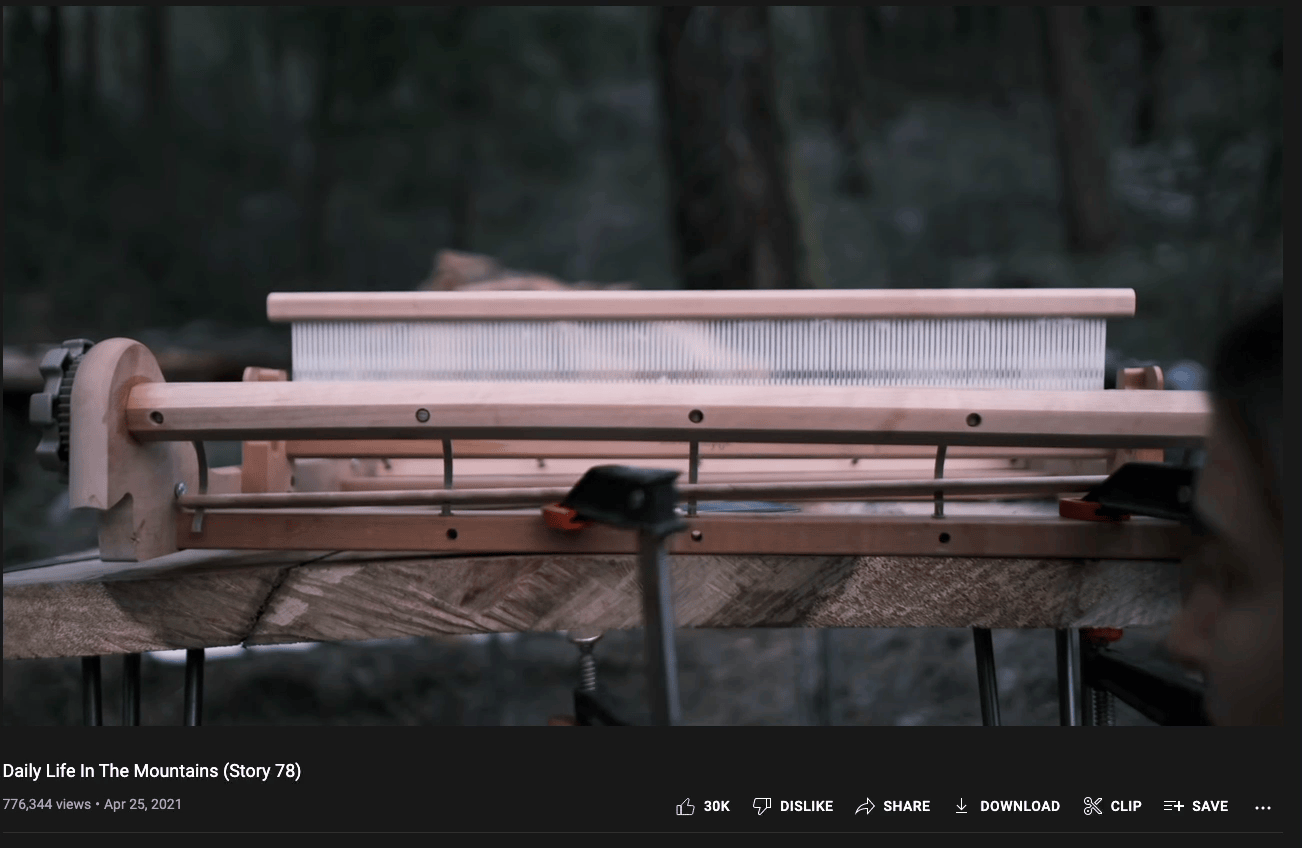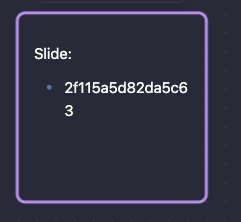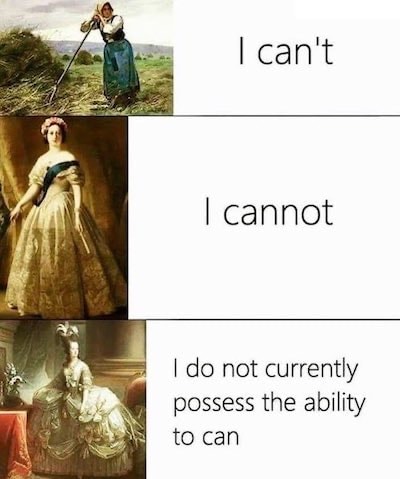content-creation
Readers All Over The World
As an online writer, I can have a global impact by reaching readers all over the world, thanks to the asynchronous nature of the internet. My words can travel far and wide, reaching people in different locations and even in the future.
As an online writer, I can have a global impact by reaching readers all over the world, thanks to the asynchronous nature of the internet. My words can travel far and wide, reaching people in different locations and even in the future.
One of the greatest things about writing online is the async impact you can provide to readers all around the world, from now onwards. It's as if by publishing a photon is created that can shoot off and spread in any direction, landing on the eyeballs of a passerby thousands of miles away, or years into the future.

GitHub - Quorafind/Obsidian-Canvas-Presentation at obsidian-roundup is a promising plugin for content creation.
In the past I've tried Excalidraw and Advanced Slides to make videos. Both felt pretty good, but they lacked the overall style I'm trying to achieve -- somewhere between Fireship and Isabel Paige visually, and Marketing Monday style delivery.
I also like minimizing my time in the Final Cut Pro step, because every minute I spend video editing is a minute I don't spend coding or writing, and well, fuck that.
Decomposition of the Video Styles Above
Fireship :
- GIFs and b-roll with programming jokes overlaid
- code snippets

- relaxing, high quality visuals, slow pace, calm atmosphere, good use of color grading

- consistently funny delivery
- each slide packed with information
- crowd work and engagement
- break out to improv and draw in real time
Can Canvas Achieve These Elements?
- gifs ✅
- readable code snippets (maybe? if zoomed correctly)
- high quality b-roll (i don't see why not -- local file storage of giant videos would absolutely decimate GBs though)
- consistently funny delivery ✅
- each slide packed with information ✅
- break out to improv and draw in real time ✅
i'll have to sit on this. anything that keeps me out the video editor is a win, perhaps this could work.
Tutorial on how to use the plugin:
- In canvas, select the card you want to use as the first slide
- Open command palette and run
Canvas Presentation: Mark Slide Number - A card will appear on your canvas that looks like this:

- Repeat step 2 with other cards until your presentation is complete
To run the presentation:
- Use
Next SlideorPrevious slideto see the next or previous slide
Some of my favorite tips -- emphasis mine:
tl;dr:
- be bold about using bold
- short headers, few letters
- jump cuts work in text too
- variety in sentence structure makes for good reading, variety on a plate makes for good eating
- hey little reader lemme whisper in your ear ^58oqr1
- don't enjoy the little detours[1]
- build an unhealthy addiction to writing for people you'll never meet
Make the post skimmable
Since 1994, Jakob Nielsen and John Morkes have been conducting studies to learn how people read online. Their conclusion, which remains true, is that readers rarely read the whole page.
Online readers are active. They like to scan and skim, picking the information they need. Most readers will read only 20% of the words in a given article. (View Highlight)
• Writing short (8 words or less) and interesting headers that tell a story. Don’t go deeper than H2 or H3.
• Write short paragraphs of less than 5 lines.
• Use bold or italic fonts to emphasize important parts of your text.
• Separate sections with plenty of whitespace.
• State the idea behind each paragraph in the first sentence. (View Highlight
Never go for longer than three paragraphs without using one or more of the following:
• Pictures
• Diagrams or charts
• Code snippets
• Lists
• Headings
• Tables (View Highlight)
“This sentence has five words. Here are five more words. Five-word sentences are fine. But several together become monotonous. Listen to what is happening. The writing is getting boring. The sound of it drones. It’s like a stuck record. The ear demands some variety.”
— Gary Provost, 100 Ways to Improve Your Writing.** (View Highlight)**
The language you use can either bring you closer to the reader or create distance.

Write using I, we, and you. Don’t be afraid to express your opinions and views. Imagine you’re speaking to a close friend and don’t write anything you wouldn’t say in a conversation.
There are instances in which rules or style guides recommend not using such pronouns. Even so, you can still maintain a friendly tone by writing in the first person for the first draft and removing it on a second pass. It may sound like extra work, but it brings warmth into otherwise dry writing. (View Highlight)
Once the clutter is controlled, it’s time to check for missing links in your reasoning and places where you branched off the topic. Each paragraph should build on the previous one without any detours. This is very careful work that demands composure. Expect the draft to undergo multiple revisions until all paragraphs perfectly line up. (View Highlight)
• Make writing a habit: find the best time to write and make a habit of writing every day. Some people like the morning and night owls write best under the cover of darkness.
• Change the scenery: go to a cafe or the park. The library works too.
• Go for a walk: turn off the computer and do some exercise. Some of the best ideas I’ve had came to me when I wasn’t at the desk.
• Sleep on it: if you’re overwhelmed, let it rest for a few days and focus on other articles. When you come back, things will fall into place a lot faster. (View Highlight)

On one side you have the shitshow that is known as Twitter with its 280 char limit and weird thread logic, and the on the other side you have the stuffiness of posting full 10,000 word essays, Obsidian Publish is a great compromise. Why?
- You can write with a lacksadasical nature, much like the meme culture on Twitter
- You can go as hard as you want with images, code blocks, etc
- (most important imo) You work on private and public at the same time. Basically, it is literally two birds with one stone. The quality of your local vault goes up drastically, and you release something every day with very little added stress.
- Share projects as they're being built! Pog!
Once a day, after you’ve done your day’s work, go back to your documentation and find one little piece of your process that you can share. Where you are in your process will determine what that piece is. If you’re in the very early stages, share your influences and what’s inspiring you. If you’re in the middle of executing a project, write about your methods or share works in progress. If you’ve just completed a project, show the final product, share scraps from the cutting-room floor, or write about what you learned. If you have lots of projects out into the world, you can report on how they’re doing—you can tell stories about how people are interacting with your work. (Location 211)
Show Your Work! - Austin Kleon

The Law of Remarkability For a mission-driven project to succeed, it should be remarkable in two different ways. First, it must compel people who encounter it to remark about it to others. Second, it must be launched in a venue that supports such remarking. (Location 2136)
- "Hey friend, you should check out X by Bram Adams. It's actually dope af"
- Just put it on the Internet, ez
The PKM Niche is Crowded
To be successful in the PKM niche, I argue that counterintuitively PKM should be used as a tool to become big in another realm of idea space.
To be a successful small business marketer you need laser-like focus on a narrow target market, sometimes called a niche. (Location 471)
if the ad just rolls out a broad laundry list of services, then it’s not speaking to either prospect, therefore it’s not relevant, and it will likely be ignored by both market segments. (Location 493)
Targeting a tight niche allows you to become a big fish in a small pond. It allows you to dominate a category or geography in a way that is impossible by being general. The type of niches that you want to go after are “an inch wide and a mile deep.” An inch wide meaning it is a very highly targeted subsection of a category. A mile deep meaning there’s a lot of people looking for a solution to that specific problem. Once you dominate one niche, you can expand your business by finding another profitable and highly targeted niche, then dominate that one also. (Location 497)
How did price suddenly become irrelevant? That is the beauty of serving a niche. Whether you do heart surgery or offer cellulite treatment, you can now charge far more for your services than by being a generalist. You’re perceived differently by your prospects and customers. A specialist is sought after rather than shopped on price. A specialist is much more highly respected than a jack-of-all-trades. A specialist is paid handsomely to solve a specific problem for their target market. (Location 506)
The PKM niche has become insanely busy lately. I've noticed a few things about this:
- devs are doing great work to move things forward, driven by "thorns in their side (check out the dev section in the weekly Obsidian Roundup, the use cases are so broad reaching)"
- PKM is kind of "all or nothing", meaning most outsiders don't get involved because the buy-in is so steep
- conversely, there is an massive amount of groupthink as info gets passed around between heavy PKM users, and very little disseminated to non PKM users
- content is getting repetitive as multiple apps that do basically the same thing in a different coat of paint or minor ideology tweak cause fanatics to drop everything and start from scratch every n months[1]
Avoid Meta-Speak
As a very astute HN commenter put on BHOV-2023:
Hypothesis: people who use these “second brain” knowledge systems spend more time writing about using them, then actually using them.
(source)
Meta-PKM is the act of using PKM systems to think only about epistemology. This is a trap. It becomes too easy to spend time uncritically, and not testing if the tenants of PKM fit the broader idea-verse. Putting other fields of study through the PKM filter helps improve PKM.
knowledge held immune from criticism never can be improved! (Location 4052)
It's becoming more and more difficult to be a "big fish" in the PKM market, but I've noticed that few people are doing a simple, powerful tactic: take the tenants of PKM back to your target market. In other words, use PKM as a shortcut to become big in another realm of idea space.
AI Generated Read Next
Similar: The Zero Sum Game of Niches - 202301051903
Clever: Windfalls Aren't Always a Blessing - 202301110058
Chaotic: (Processing) New Rules of Posture and Rich Dad, Poor Dad - 202301110221
this happens in the web dev space as well: jquery > angular > react > vue > nextjs > svelte > on and on until the heat death of the universe …
YouTube
The YouTube subscription page is a chronologically weighted page, favoring channels that post consistently and "1000 true fan" type subscribers. 202212160135
The home page uses a recommendation algorithm based on CTR and watch time.
These two -- on the surface -- don't conflict with each other. But they create two very different game theory strategies. The subscription page can be populated by people who spam post every day, but that may cause your subscribers to not click through impressions, lowering CTR in the home page algorithm and harming a channel in the long run. On the other hand, making one banger video every six months decreases a channel's chances greatly of being subscribed to on the platform. People on the home page who watch a video may not subscribe, meaning that a channel's video may never surface for them again in the infinite rabbit hole that is YouTube.
Either way, YouTube the platform wins. It is able to keep viewers engaged for hours 202301141347 without noticing that time has gone by. Viewers continue to consume ads, and YT prints moola.
For creators on the platform, the game theory optimum is an interesting question.
YouTube prioritizes two types of content:
- evergreen
- now
Evergreen content will have a high CTR/watch time because it is a video that is usually answering an evergreen type query (video search engine and all) or is always entertaining.
"Now" content was popularized by Casey Neistat and vloggers -- it's all about fast paced, highly time-relevant, event-based content.
Again, it is damn near impossible for any individual creator, despite their niche, to create content that fills both these buckets. 202212200032
The game YouTube has intentionally or unintentionally created for creators is toxic. It values surface area (new videos being posted to the platform) over volume (quality videos being posted to the platform). Any creator who desires to make consistent income will eventually have to become a daily creator on the platform, with the attempt to maintain a minimal quality level that will keep people clicking -- much akin to a widget factory.
Is there a solution? I've written before about content flywheels -- how I think the only sustainable strategy is to create sustainable content. In short, to fulfill an audience need, find a niche and a level of quality with you can put out consistently, and automate, automate, automate. Share scraps off the floor. But even while doing all this, the very nature of YouTube always means that your n-th video will always be more valuable than your (n-1)-th video.
Twitch
Go live, as often as possible, as long as possible. Full stop. Even if it destroys you.

But on Twitch, where discoverability is a challenge when you’re offline and your hours spent streaming each month are tightly coupled with your earnings, burnout can be especially common for streamers staying live to stay relevant. Popular streamer and YouTuber Chris Melberger pointed to the catch-22 of it all—taking a week off Twitch or changing your schedule means curtailing growth; refusing to do so means burnout. (View Highlight)
Parasocialiality dominates on Twitch, and Regina George is only Regina George because she is visible. Stop trying to make fetch happen, it's live TV.
Zettelkasten + Publishing
One of the reasons I like Zettelkasten so much is that its very, very, very easy to publish ideas from source material 202212181947. These ideas are micro, and generally created from some sort of literature note or are directly inspired by another note. This means it's easy to show up daily with new and inspired ideas that have a high level of quality.
The Obsidian Publish UI is ordered by tag and chronologically. Linking is trivial, meaning old ideas become "evergreen" very easily. Over time, the volume can reach a critical mass, and the concept of a backlog just becomes different paths a visitor can traverse. In short, Obsidian Publish exposes a explicit graph, where YouTube is an implicit graph, and Twitch is a boolean hash map of live/not live. 202301111303
Perhaps one day, the web will become more like Obsidian Publish. Perhaps old ideas 202212270327 will be treated with the same sanctity as new ideas, and the global anxiety of needing to consistently show up on people's feeds will go down.
Just a dream, perhaps.